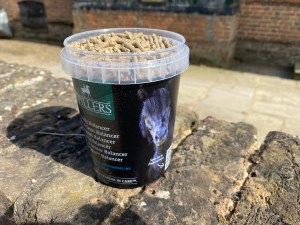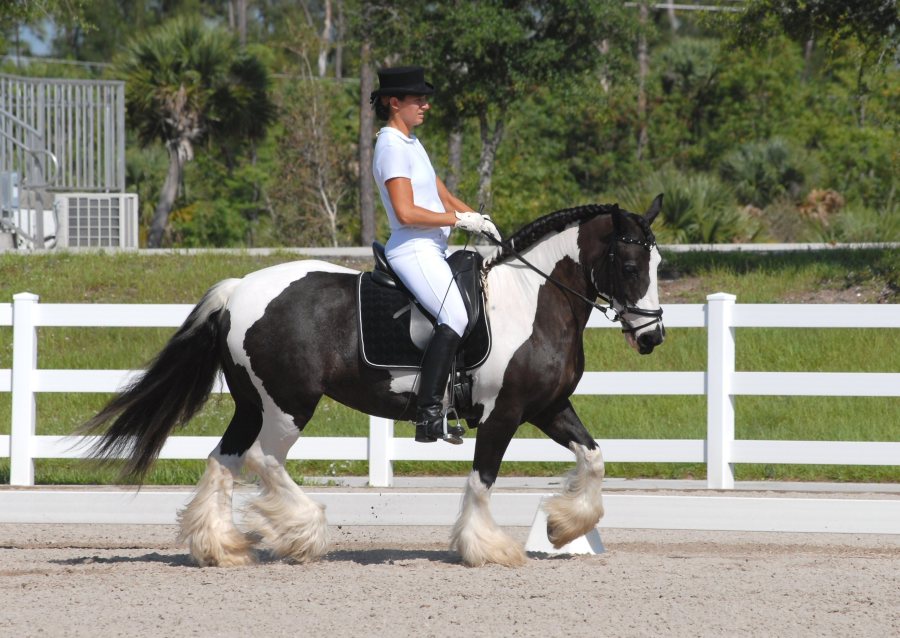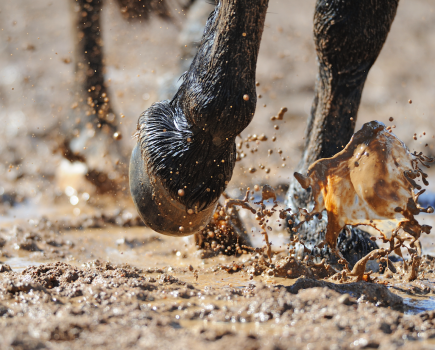In partnership with SPILLERS™
Topline is a common topic of conversation but how much influence does diet really have on its development? If you’re wondering how to maintain muscle development while managing your horse on a calorie restricted diet read on!
Building muscle: the recipe for success
To support muscle development, the diet needs to supply appropriate amounts of energy and quality protein in the form of amino acids. However, you can’t build muscle from feed alone – no amount of lean meat or protein shakes is going to turn you into a body builder without hitting the gym! Muscles are made up of thousands of individual muscle fibres. To increase muscle mass, these fibres must be subjected to an appropriate type, intensity, duration and frequency of work.
Dieting pitfalls
The aim of dieting, for horses and humans, is to lose excess fat although inevitably, some of the weight lost will be muscle. However, this will be exacerbated if protein and amino acid requirements are not met as the body will begin to break down muscle tissue to try and meet demand. Amino acids are the ‘building blocks’ which make up protein. It’s the profile of amino acids relative to the horse’s requirements that determine protein quality, with lysine being of particular importance. Lysine intake may be particularly low in horses on a calorie restricted diet for several reasons including:
- Straw, which is low in crude protein and lysine may be used as partial replacement for hay/ haylage.
- Good doers are often managed on poor quality and/ or restricted grazing.
- Mature hay/ haylage which is often chosen for good doers as it may be lower in calories, is typically lower in protein than younger forages.
- Soaking hay results in some loss of soluble protein.
Myth buster: fat can’t be converted into muscle – fact! Resist falling into the trap of over-feeding or feeding in anticipation of increased work to build topline.
Is it muscle or fat?
Telling the difference between muscle and fat can be tricky, even for experienced owners but in general fat feels ‘spongey’ and muscle feels firm. That said, it’s easy to be caught out:
- A lack of muscle mass may be mistaken for a lack of fat.
- ‘Softer’ muscle in senior or unexercised horses may be mistaken for excess fat.
- Excess fat may be mistaken for topline – the rounded ‘topline’ seen in natives, cobs and warmbloods is often fat rather than muscle.
- Excess fat can make it difficult or impossible to assess muscle in some areas.
Top tips
 Feeding a pelleted balancer is often a simple and effective way of balancing forage for good doers while adding limited calories to the total diet. Look for a balancer high in lysine and vitamin E. Vitamin E plays a key role in supporting muscle health and may be low in calorie restricted diets.
Feeding a pelleted balancer is often a simple and effective way of balancing forage for good doers while adding limited calories to the total diet. Look for a balancer high in lysine and vitamin E. Vitamin E plays a key role in supporting muscle health and may be low in calorie restricted diets.- Get advice from an instructor/ trainer and possibly a physio on how to adapt your horse’s work. Always seek veterinary advice before returning your horse to work following an injury/ lameness.
- Practice body condition scoring. Even if you’re unsure of your horse’s exact score, improving your ability to spot if and where your horse is carrying excess fat will be helpful.
- Get familiar with body condition scoring. Many feed companies offer weigh clinics run by experienced nutrition advisors who can help you get to grips with body condition scoring, including how to differentiate between muscle and fat.
- Remember body condition scoring, whichever scale you use, is an assessment of fat, not muscle which means it’s possible for horses in ‘ideal’ or overweight condition to be under muscled.
![]() Have you heard about Your Horse’s #FitNotFat campaign? Equine obesity is an enormous welfare problem and we’re on a mission to provide owners and riders with the knowledge, skills and information you need to keep your horse in tip-top health. It could be life saving! Find out more
Have you heard about Your Horse’s #FitNotFat campaign? Equine obesity is an enormous welfare problem and we’re on a mission to provide owners and riders with the knowledge, skills and information you need to keep your horse in tip-top health. It could be life saving! Find out more
Lead image by Shutterstock










